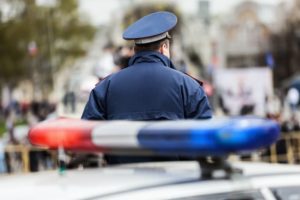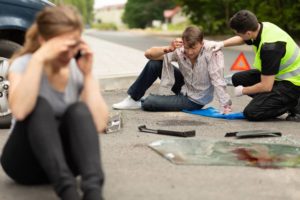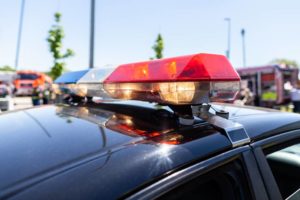Officer Denzel was responding to a domestic dispute when he was shot in the chest by an angry husband. His partner, Officer Wu, who had received specialized training in CPR, AED, and first aid, arrived on the scene moments later. Denzel was losing blood and consciousness. He swiftly initiated CPR and used the AED to shock Denzel’s heart back into rhythm. Thanks to Wu’s decisive actions, Denzel survived the unfortunate incident and made a full recovery.
Picture an average day. Now, imagine it shifting dramatically in a single instant. What separates these two moments? The timely application of vital skills. This rings particularly true for our brave police officers, who are often the first on the scene during crises. Due to the fact that they frequently step into unpredictable and disordered situations, it is important for them to be familiar with life-saving procedures such as CPR, AED, and First Aid.
Allow me to share a personal experience. I once came across a severe car crash in a secluded area on a rainy evening. The ambulance was yet to arrive, but a police vehicle appeared within minutes. The officer wasted no time in rushing to the unconscious driver and started performing CPR while using an AED from his cruiser. His relentless effort to revive the driver continued until the arrival of the ambulance. This experience drew to my attention, the enormous significance of CPR AED and First Aid training in a life or death scenario.
Grasping CPR, AED, and First Aid
Cardiopulmonary Resuscitation or CPR is an emergency process used when someone’s heartbeat or breathing ceases. It involves chest compressions, often supplemented with artificial ventilation, mimicking the heart and lungs’ role of circulating oxygen-rich blood. Timely and correct application of CPR can dramatically increase survival rates in various situations like heart attacks or instances of near-drowning.
The Automated External Defibrillator (AED) is another key instrument. This portable device can diagnose and treat dangerous heart conditions by delivering an electric shock to the heart. Its use significantly boosts survival rates from sudden cardiac arrests, especially if used within the initial few minutes.
First Aid refers to the immediate help or treatment provided to a person suffering from an illness or injury. This can range from applying a bandage to a wound, assisting a choking person, or performing the Heimlich maneuver. These essential medical practices can stabilize patients and prevent further harm until healthcare professionals arrive.
Police Officers’ Part in Emergencies
Police officers are always on guard, ready to respond instantly to the wide array of emergencies that can arise in any community. These situations often call for a diverse skill set beyond standard law enforcement. As first responders, police officers are often the lifeline for individuals trapped in life-threatening scenarios.
Consider an incident that occurred on a bustling summer day. Amidst the city’s hustle and bustle, an urgent call came through on the police scanner. A construction worker had taken a severe fall at a downtown site and was unresponsive.
Officer Marquez, who was patrolling nearby, swiftly reached the scene. The worker lay still, his co-workers standing around in shock. Time was critical. He tapped into his First Aid and CPR training. He cleared the area around the worker, checked his vitals, and found he wasn’t breathing.
Officer Marquez began chest compressions, maintaining a steady rhythm. He persisted, knowing that keeping the blood oxygenated was very important. When the ambulance finally arrived at the scene, a sense of relief washed over the onlooking crowd. Officer Marquez had taken quick and decisive action, managing to restart the worker’s breathing before the medical professionals arrived. This event shed light on the multi-faceted responsibilities that police officers carry. Not only do they uphold the law and ensure public safety, but they also act as first responders in times of crisis
The Crucial Role of CPR and AED in Cardiac Arrest Cases
Cardiac arrests often occur outside hospital premises, necessitating immediate intervention by bystanders, often before medical personnel can arrive. A timely and correctly administered CPR can double, even triple, survival rates from such incidents.
Moreover, cardiac arrests often lead to irregular heart rhythms. Here, an AED proves critical. If used within the first few minutes, it can improve survival chances by a remarkable 70%. The device is designed for use by non-medical personnel and provides audio instructions, making it a valuable tool for a police officer.
The Value of First Aid at Accident and Crime Scenes
Accidents and crime scenes are often chaotic, with victims suffering from various injuries. Timely First Aid can prevent injuries from worsening and even save lives. From controlling bleeding, recognizing signs of shock, to stabilizing fractures, the first few minutes after an incident are critical.
Imagine a scenario where an officer arrives at a violent crime scene. Victims might have knife or gunshot wounds or injuries from a physical assault. Knowledge of First Aid would enable the officer to apply pressure to stop bleeding, stabilize the victim, and potentially hindering a fatal outcome.
Building Community Trust through Police Officers’ Knowledge of CPR, AED, and First Aid
Knowledge of CPR, AED, and First Aid does more than just save lives; it helps bridge the gap between law enforcement and communities. When people witness police officers saving lives, it nurtures trust and respect, reinforcing the image of the police force as protectors, not just enforcers.
A prime example is Officer Jenna from our local precinct, who saved a high school student’s life using CPR and an AED during a school basketball game. The student had suddenly collapsed from a cardiac arrest. Officer Jenna’s immediate response was critical in saving his life, and her heroic act strengthened community trust and cooperation.
Summing Up
Regular training in CPR, AED, and First Aid is more than just a recommendation for police officers; it’s a must. These are the officers who arrive first at the scene, straddling the delicate line between life and death. Hence, they must be armed with these life-saving skills.
At United Medical Education, we provide comprehensive training and certification in these areas, preparing officers for these challenging scenarios. We also offer free Pediatric Advanced Life Support (PALS) training for those who create a free student account, as well as free practice exams to help prepare students for the PALS final exam.
Invest in this training for your officers, not only for their benefit but also for the communities they serve. After all, the line between a tragedy and a survival story could very well be your level of preparedness.




